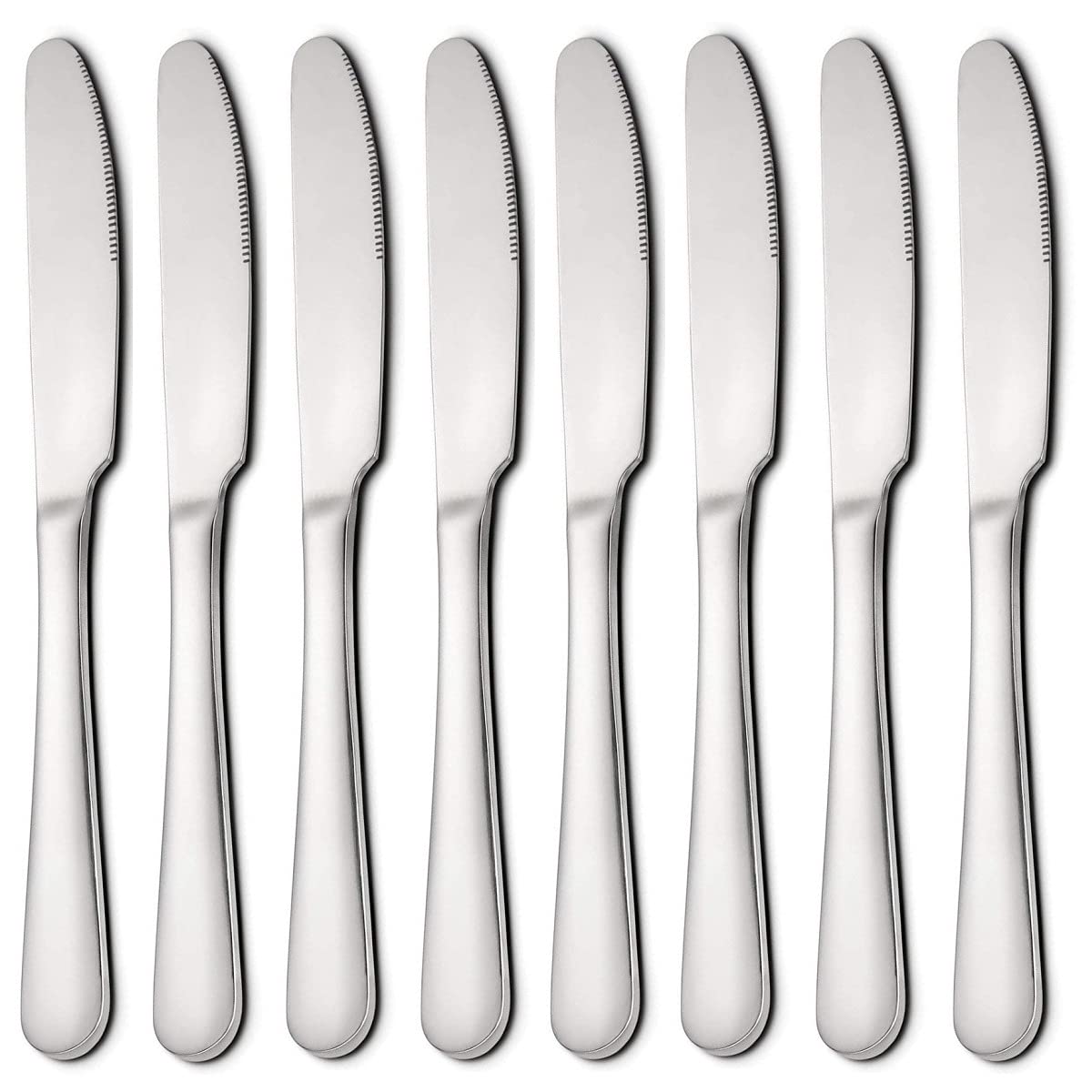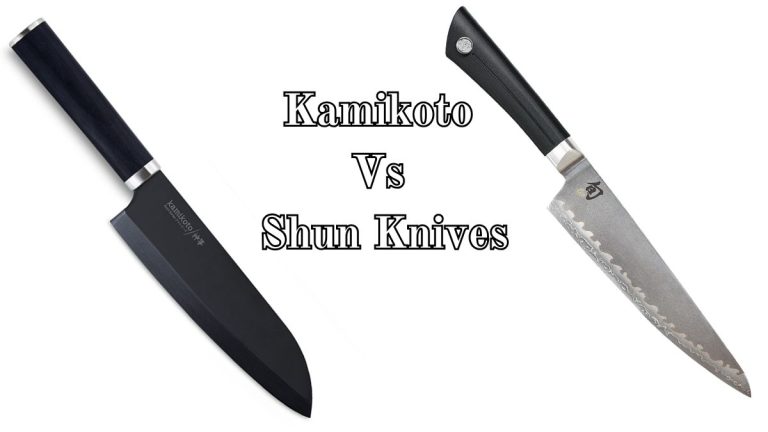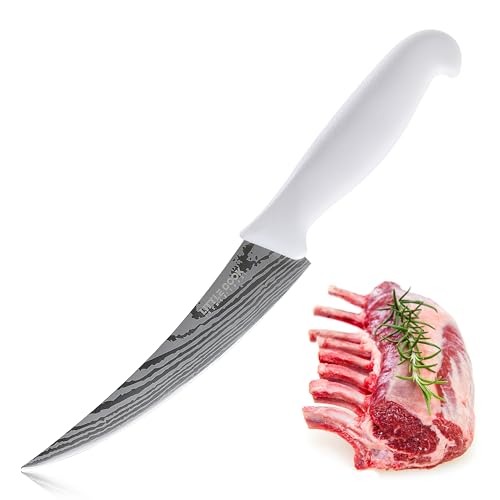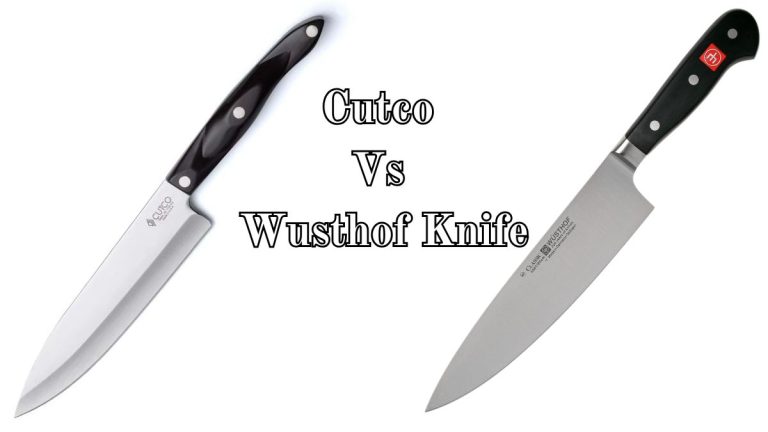Dessert Knife Vs Dinner Knife: Key Differences Explained
Choosing the right knife for dining can enhance your meal experience. Dessert knives and dinner knives serve different purposes.
Understanding their differences helps you use them correctly. Many people wonder about the distinction between dessert knives and dinner knives. Both are essential in table settings, yet they have specific uses. A dessert knife is smaller and designed for sweets.
A dinner knife is larger and used for main courses. This comparison highlights why having both types at your table is useful. Knowing when to use each knife elevates your dining etiquette. Whether hosting a dinner party or enjoying a meal, this guide will help you make the right choice. Let’s explore the features and uses of dessert and dinner knives.
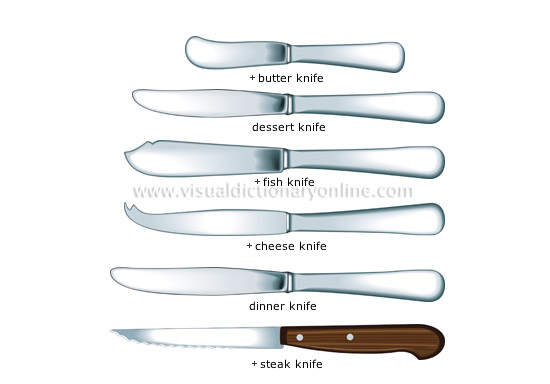
Credit: www.visualdictionaryonline.com
Introduction To Cutlery
Cutlery is an essential part of dining. The right tools can elevate your meal experience. Choosing the right knife can make a significant difference. This blog will explore the differences between a dessert knife and a dinner knife.
Importance Of Choosing The Right Knife
Knives are more than just cutting tools. They help in presenting food properly. Using the correct knife ensures you enjoy your meal without struggle.
Each knife has a specific purpose. Using the wrong knife can be frustrating. For example, cutting a steak with a dessert knife is challenging.
Basic Knife Types
Understanding the basic knife types is crucial. Here are the most common knives used at the dining table:
- Dinner Knife: The most versatile knife. Used for cutting main courses.
- Dessert Knife: Smaller and more delicate. Perfect for cakes and pastries.
- Butter Knife: Ideal for spreading butter and soft spreads.
- Steak Knife: Sharp and serrated. Best for cutting through meat.
Let’s compare the dessert knife and the dinner knife in detail:
| Feature | Dessert Knife | Dinner Knife |
|---|---|---|
| Size | Smaller | Larger |
| Blade | Delicate | Sturdy |
| Use | Desserts | Main Courses |
Choosing the right knife can enhance your dining experience. It makes meals more enjoyable and efficient. Always match the knife to the food being served.

Credit: www.reddit.com
Design Features
Understanding the design features of a dessert knife and a dinner knife is important. These features affect their function and use. Let’s explore the differences in blade shape and handle design.
Blade Shape
A dessert knife usually has a shorter blade. Its edge is smooth and sometimes slightly serrated. This makes it ideal for cutting through soft desserts like cakes or pies. The tip of a dessert knife is often rounded or pointed, allowing for precise cuts.
In contrast, a dinner knife has a longer blade. The edge is typically serrated or scalloped. This helps cut through tougher foods, such as meats and vegetables. The blade of a dinner knife is wider and more robust, providing the necessary strength.
Handle Design
The handle of a dessert knife is often more delicate. It is usually shorter and lighter. This makes it easier to handle when cutting small portions of dessert. The design may feature intricate patterns or decorations, adding to the aesthetic appeal.
A dinner knife typically has a larger, heavier handle. This provides a firm grip for cutting through tougher foods. The handle design is generally more practical and less ornate. It is built for durability and ease of use during a meal.
| Feature | Dessert Knife | Dinner Knife |
|---|---|---|
| Blade Length | Short | Long |
| Blade Edge | Smooth or slightly serrated | Serrated or scalloped |
| Handle | Short and light | Large and heavy |
| Handle Design | Ornate | Practical |
Purpose And Usage
Choosing the right knife for your meal enhances the dining experience. Understanding the purpose and usage of a dessert knife versus a dinner knife can make a difference. Each knife has a specific role at the dining table. Knowing when to use each knife can improve your table manners and dining experience.
When To Use A Dessert Knife
The dessert knife is smaller than a dinner knife. It is used with sweet dishes. You often see it with cakes, pies, and pastries. The blade is short and often has a pointed tip. This design helps in cutting through delicate textures. It is also used for spreading cream or jam. The dessert knife is usually placed above the dessert fork on the dining table.
When To Use A Dinner Knife
A dinner knife is larger and heavier. It is used with the main course. This knife cuts through meat, vegetables, and other main dishes. It usually has a serrated or smooth edge. The blade is long and sturdy. The dinner knife is placed next to the dinner plate. It is often to the right of the plate, with the cutting edge facing inward.
Material Differences
When choosing between a dessert knife and a dinner knife, material differences play a significant role. Each type of knife is made from materials suited to its specific purpose. Understanding these differences can help you select the right knife for your needs.
Common Materials For Dessert Knives
Dessert knives are often made from stainless steel. This material is durable and resists rust. Stainless steel also provides a sleek, shiny finish, enhancing the visual appeal of dessert settings. Some dessert knives feature ceramic blades. Ceramic is lightweight and retains sharpness for a long time. Silver-plated dessert knives are another option. These knives add a touch of elegance and are usually reserved for special occasions.
Common Materials For Dinner Knives
Dinner knives are commonly made from stainless steel. This material’s strength and resistance to corrosion make it ideal for daily use. High-carbon steel is another popular choice for dinner knives. It offers superior sharpness and edge retention. Some dinner knives include wooden handles. Wood adds a classic, natural look but requires more care. Plastic handles on dinner knives are also common. They are durable, easy to clean, and come in various colors.
Size And Weight
Choosing the right knife for your meal can improve your dining experience. Let’s explore the differences in size and weight between dessert knives and dinner knives.
Comparing Knife Length
Dessert knives are generally shorter than dinner knives. Their length ranges from 6 to 8 inches. This compact size makes them perfect for cutting smaller portions. Dinner knives, on the other hand, measure between 8 and 10 inches. The extra length helps in cutting larger food items like steak or chicken.
Weight Considerations
Weight also varies between these two types of knives. Dessert knives are lighter. This makes them easier to handle for delicate tasks. They weigh around 2 to 3 ounces. Dinner knives are heavier. They weigh between 4 to 6 ounces. This added weight helps in cutting through tougher foods with ease.
Aesthetic Considerations
When choosing between a dessert knife and a dinner knife, aesthetics play a key role. The design and impact on the table setting are important factors. Both knives have distinct looks and purposes. Let’s explore these aspects in detail.
Design Preferences
Dessert knives often have a delicate design. They are usually smaller and more elegant. This makes them suitable for fine dining and special occasions. The handles may have intricate patterns. The blades are often slim and pointed.
Dinner knives are more robust. They have a larger, sturdier build. This is due to their primary function of cutting through main course dishes. The handles are typically plain. The blades are broader and may have a slight serration.
Here is a quick comparison:
| Feature | Dessert Knife | Dinner Knife |
|---|---|---|
| Size | Smaller | Larger |
| Design | Elegant | Robust |
| Blade | Slim and pointed | Broad, sometimes serrated |
Table Setting Impact
The choice of knife affects the overall table setting. A dessert knife adds a touch of sophistication. It completes a well-thought-out place setting. It often pairs with matching dessert forks and spoons.
A dinner knife, on the other hand, sets the tone for the main course. It is usually placed next to the dinner plate. It often matches the dinner fork and spoon in style. The presence of a well-designed dinner knife enhances the dining experience.
A few tips for a perfect table setting:
- Ensure all utensils match in style.
- Place the knives on the right side of the plate.
- Use dessert knives for desserts and dinner knives for main courses.
By paying attention to these aesthetic considerations, you can create a visually pleasing and functional table setting.
Maintenance Tips
Proper maintenance of your knives ensures they remain sharp and effective. Both dessert knives and dinner knives need care, but their maintenance slightly differs. Here are some essential tips to keep your knives in top shape.
Cleaning Guidelines
Cleaning your knives correctly is crucial for longevity. Follow these steps:
- Hand wash knives immediately after use with warm water and mild soap.
- Avoid using a dishwasher as it can dull the blades and cause corrosion.
- Use a soft sponge or cloth to clean the blades gently.
- Dry knives thoroughly with a soft towel to prevent rust.
Dessert knives often have delicate designs. Ensure to clean them carefully to avoid damage. Dinner knives are usually more robust but still need gentle handling.
Storage Solutions
Storing your knives properly helps maintain their sharpness and safety. Here are some storage solutions:
- Use a knife block to store knives safely and securely.
- Magnetic strips provide an excellent space-saving storage option.
- For travel or outdoor use, consider a knife roll or protective sheaths.
- Avoid storing knives in a drawer without protection. This can cause damage to the blades.
Keep dessert knives in a dedicated spot to prevent mixing with other utensils. Dinner knives should be stored where they are easily accessible yet safely contained.
By following these cleaning and storage guidelines, you can extend the life of your knives significantly. Proper maintenance ensures your knives remain a joy to use during every meal.
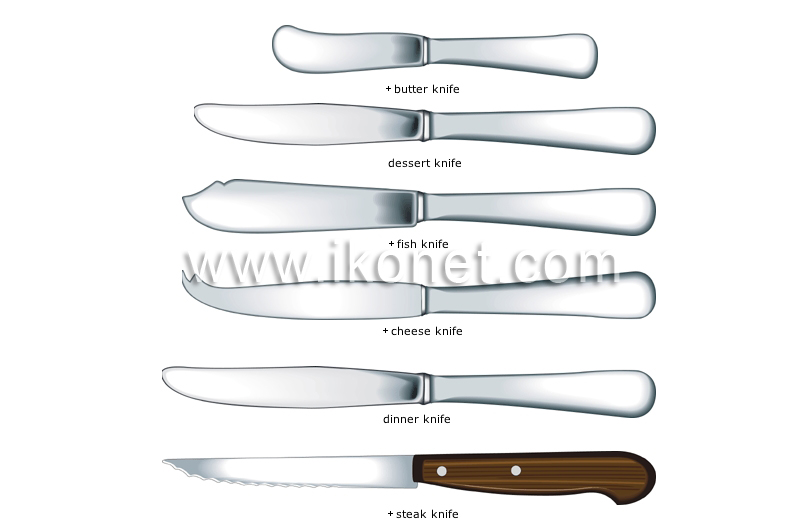
Credit: www.ikonet.com
Choosing The Right Knife
Choosing the right knife can enhance your dining experience. Understanding the difference between a dessert knife and a dinner knife is essential. Each knife serves a unique purpose at the dining table. The right choice depends on the occasion and your personal preferences.
Occasion-based Selection
For formal dinners, a dinner knife is your best choice. It helps you cut through main courses like steak or chicken. A dessert knife, on the other hand, is ideal for sweet treats. Use it for cakes, pies, and other desserts. The size and shape of the knife make a difference. A dinner knife is larger and sturdier. A dessert knife is smaller and more delicate.
Personal Preferences
Personal preferences also play a role in your choice. Some people prefer a lighter knife. They find it easier to handle. Others like the heft of a dinner knife. It gives a sense of control. Think about the grip and balance. A well-balanced knife feels comfortable. The handle should fit well in your hand. Test different knives to find your favorite.
Consider the material too. Stainless steel is a popular choice. It is durable and easy to clean. Some prefer knives with decorative handles. These add a touch of elegance to the table. Choose a knife that matches your style and needs.
Frequently Asked Questions
What Is A Dessert Knife?
A dessert knife is a smaller knife used for cutting and eating desserts. It has a narrower blade compared to a dinner knife.
How Does A Dinner Knife Differ From A Dessert Knife?
A dinner knife is larger and used for main courses. A dessert knife is smaller, with a narrower blade for desserts.
Can You Use A Dinner Knife For Dessert?
While you can use a dinner knife for dessert, a dessert knife is more appropriate. It offers better control for delicate desserts.
Why Are Dessert Knives Smaller?
Dessert knives are smaller to handle delicate desserts easily. Their size provides better control and precision.
Conclusion
Choosing the right knife enhances your dining experience. Use a dessert knife for sweets. A dinner knife works for main courses. Both knives serve distinct purposes. Understanding their differences helps you enjoy meals better. Always select the proper knife for each course.
It adds elegance and ease to your dining. Enjoy your meal with the right utensils. It’s simple and makes a big difference. Happy dining!

